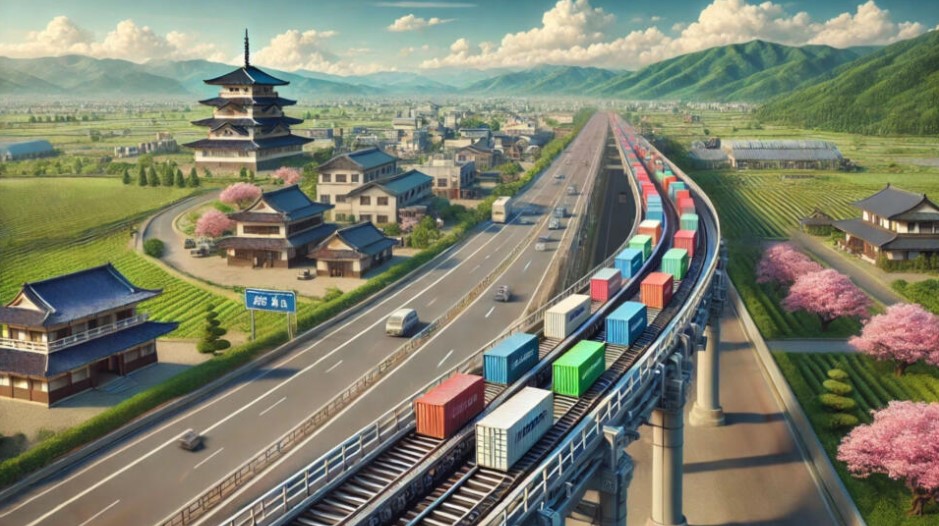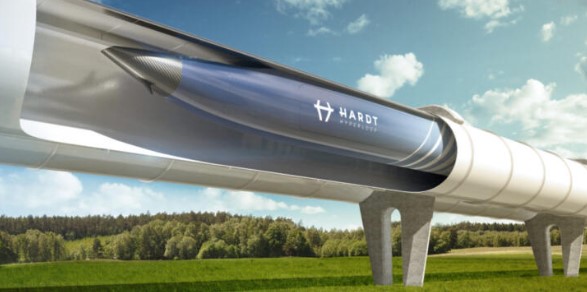Cranking Out Cargo and The Future of Trucking
Tens of thousands of trucks are dispatched to travel the highways for shipping goods from A to B in countries all over the world – including Japan. However, a project there is pursuing the integration of an automated alternative. Can conveyor belts replace trucks? Here’s a mix of facts and quotes . . .
- Japan plans to build a 500-kilometer conveyor belt system called “Autoflow-Road.”
- It will run alongside highways or in tunnels to move containers and pallets.
- The goal is to make shipping more efficient and reduce CO2 emissions.

500 kilometers (310 miles): That’s roughly the planned length of the “Autoflow-Road” conveyor belt with which the Japanese Ministry of Land, Infrastructure, Transport and Tourism wants to connect the cities of Tokyo and Osaka. The system is supposed to operate alongside freeways and expressways or in underground tunnels. It’s designed to carry containers or standardized pallets. 24 hours a day, seven days a week. The world’s longest conveyor belt in existence has been traversing a 100-kilometer (62-mile) distance in the desert connecting a mine in the Western Sahara with a port on the Atlantic coast.
25,000 trucks in terms of cargo volume could be replaced by the conveyor belt per day. On the one hand, the project is intended to decongest freeway traffic and on the other to reduce greenhouse gas emissions.
660,000 vehicle operators were available in Japan in 2020. The Japanese Ministry of Land, Infrastructure, Transport and Tourism has projected that number to drop to 480,000 by 2030. That’s going to mean 27 percent fewer drivers to haul the same amount of goods. The conveyor belt system could close part of that gap. 1.4 billion metric tons (1.5 billion short tons) of goods are transported on Japanese roads per year.
2034 is the year in which the conveyor belt is scheduled to be put into service, according to the planning authority. Various construction companies in Japan estimate the costs for a ten-kilometer (6.2-mile) section — depending on the topography — to amount to between 40 and 460 million euros. That would mean total costs of up to 21.5 billion euros. To cover the huge costs, logistics services providers wanting to use the conveyor belt are supposed to ensure part of the funding.
Expert Opinions
- Prof. Dr.-Ing. Carsten Dorn
- Believes the project is technically feasible and sustainable.
- Highlights energy efficiency and smart logistics as advantages.
- Mentions challenges in planning routes and securing funding.
- Manfred Henneck
- Sees potential for increased transport capacity and improved safety.
- Points out benefits for suppliers like Schaeffler.
Alternative Technologies
- Hyperloop Concept
- Explores using vacuum tubes for high-speed cargo transport.
- Offers potential for high cargo volume and improved safety.

Conclusion
The discussion continues on the future of trucking, on whether to stick with trucks or move towards automated systems, considering local infrastructure, cost-effectiveness, and environmental impact.
What’s your thoughts on The Future of Trucking?
What are the advantages of using a conveyor belt system for cargo transportation?
How does the Hyperloop concept propose to revolutionize cargo logistics?
What are the challenges associated with implementing a 500-kilometer conveyor belt system in Japan?O’Donnell Commercials Truck and Trailer Parts, Donegal, Ireland.
- Delivering throughout Ireland and to the UK daily
- Phone: 074 93 90122
- sales@odonnellcommercials.ie
- Taking bookings for 12 Week Inspections

